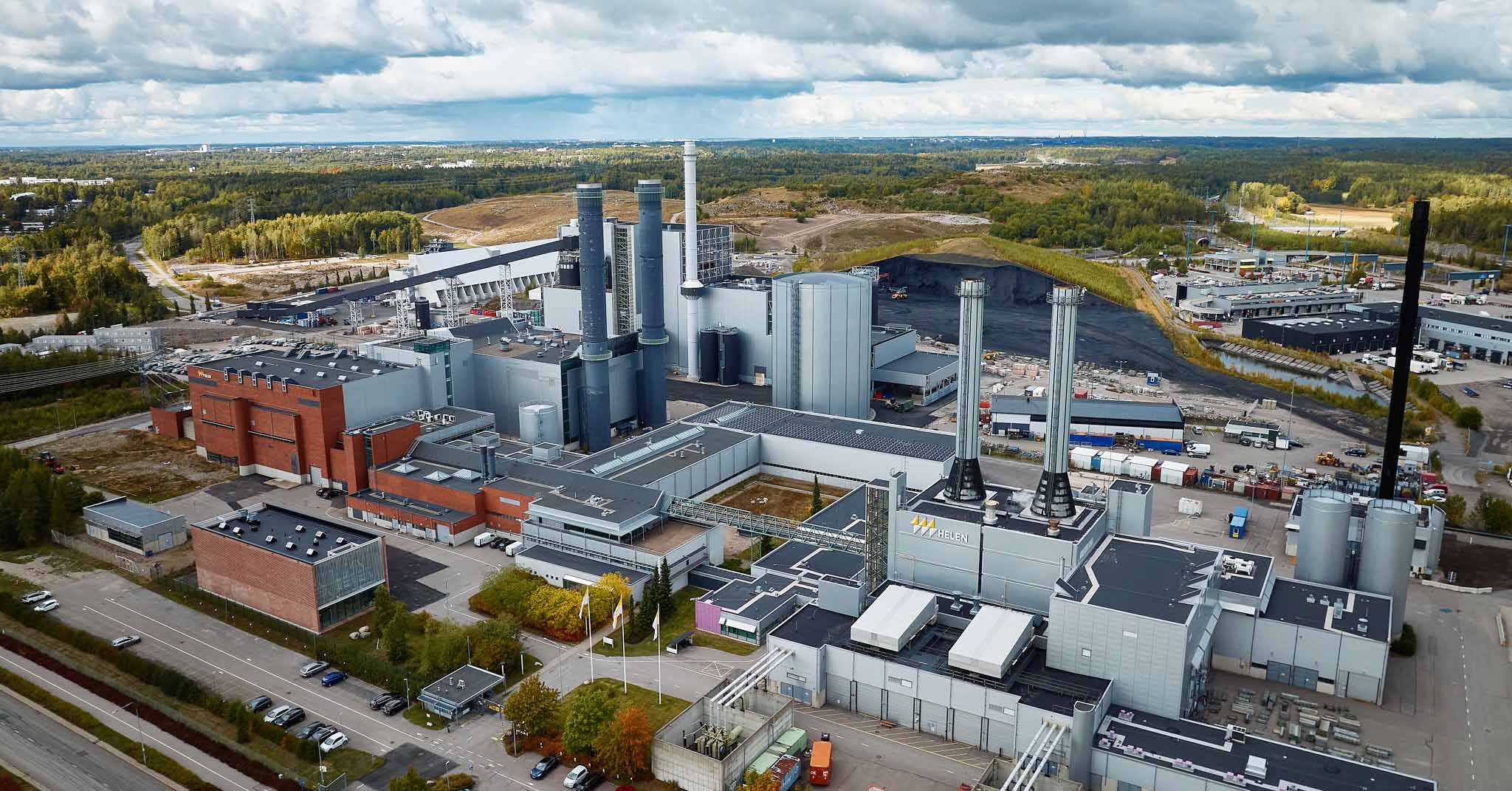
Heat production started in Vuosaari bioenergy heating plant – adaptable hybrid plant offers top-class energy efficiency
Heat production in the Vuosaari bioenergy heating plant has started on schedule in the heating period 2022–2023. The plant has produced heat from biomass into the district heating network since 9 December. The bioenergy heating plant replaces a significant amount of the district heat production volume of the Hanasaari power plant, which will be decommissioned on 1 April 2023, and it will also balance the price variations of thermal energy. As a result of the decommissioning of the Hanasaari plant, the total emissions of the City of Helsinki will fall by about 20 per cent. In addition to the bioenergy heating plant, heat production from Hanasaari will also be replaced with other production, such as with various heat pumps and electric boilers utilising waste and environmental heat, and with energy storage.
The district heat output of the bioenergy heating plant is in excess of 260 megawatts, and the district heat energy it produces corresponds to about a quarter of Helen’s district heat production. The plant will reduce carbon dioxide emissions by 700 tonnes per year. The Vuosaari bioenergy heating plant is an important part of the distributed and sustainable energy system, and it contributes to Helen’s diverse energy mix.
“The Vuosaari bioenergy heating plant is one of our largest projects and an important step on our journey towards carbon neutrality, which we have set as our target by 2030. The district heat we have produced in the 2020s is largely based on energy produced with various heat pumps, electric boilers and sustainable biomass. In the 2030s, we will increase the share of non-combustion production methods in heat production, and the share of biomass will be reduced. The significance of steering by data will also grow in the future. In future, we can optimise the production, distribution and consumption of heat more efficiently with the aid of artificial intelligence and the smart grid,” says Timo Aaltonen, Helen’s Senior Vice President, Energy Platform and Production Solutions.
The plant will replace a significant part of the district heat production of the soon-to-be decommissioned Hanasaari power plant
The design of the Vuosaari bioenergy heating plant is based on high availability, energy efficiency and the plant’s adaptability to various future needs. The plant does not produce electricity, but it can be modified into a combined district heat and power production plant by investing in a separate turbine plant. Thanks to its adaptability, the modern plant will also enable utilisation of various fuels. In the future, it will be possible to utilise, for example, carbon capture, hydrogen production and Power-to-X technologies (P2X) in the plant.
Energy efficiency has been maximised to the full in the new bioenergy heating plant. The plant’s rated thermal input is 220 MW and its district heat output is more than 260 MW, which means that its efficiency is about 120 per cent. The boiler temperature is about 700–900 degrees, but the temperature of flue gas coming out of the 80-metres high chimney stack is about 11 degrees at best.
“The heat recovery of flue gases after the boiler can be maximised, and almost all of the water vapour contained in them is condensed with the aid of a separate heat recovery plant and the absorption heat pumps connected to it. Condensing of the water vapour of flue gases taking place at the heat recovery plant enables about 120 per cent efficiency. Thanks to the water treatment plant, no waste water is produced and even the condensate produced in the heat recovery plant is utilised. The selected solutions make the Vuosaari bioenergy heating plant the most energy-efficient plant in Finland. Water vapour constitutes less than one per cent of the flue gas mass leaving the stack,” sums up Project Manager Antti Saikkonen.
Sustainable bioenergy while safeguarding biodiversity
Helen published its biodiversity strategy earlier this year. Helen’s vision is to aim for net positivity in the long term, i.e. the nature impacts of our operations will be smaller than in the current situation. In addition to hydropower production and energy infrastructure projects, the key development areas of our strategy includes the procurement of bioenergy. We aim for sustainability in 100 per cent of our procured biomass. In practice, this means that the wood fuels we procure come from certified suppliers (e.g. PEFC, FSC or SBP) and from controlled sources. We also require that the production of our fuel suppliers takes into account sustainable forestry and biodiversity.
The Vuosaari bioenergy heating plant has been designed so that it is capable of using various biomass fractions in as diverse a way as possible. The main fuels are various forest chips and by-products of the forest industry, such as bark and sawdust. We recognise the significance of deadwood to biodiversity in production forests, and we know the key principles of maintaining and producing deadwood. Energy wood is not grown separately in Finnish forests, and therefore fractions used for energy are by-products of logging, forest management, and the sawmill and forest industries. Wood chips are produced from the by-products of logging, such as from branches and small-diameter thinning wood. By-products of the forest industry include, e.g. wood bark and sawdust, while circular economy fractions include, for example, reclaimed and demolition wood. Procurement is carried out mainly in Finland and it is supplemented with imports, for example, from countries around the Baltic Sea, when necessary.